What DoD Instruction Governs the Controlled Unclassified Information Program?
Explore what DoD instruction implements the DoD CUI program and its importance for data protection.
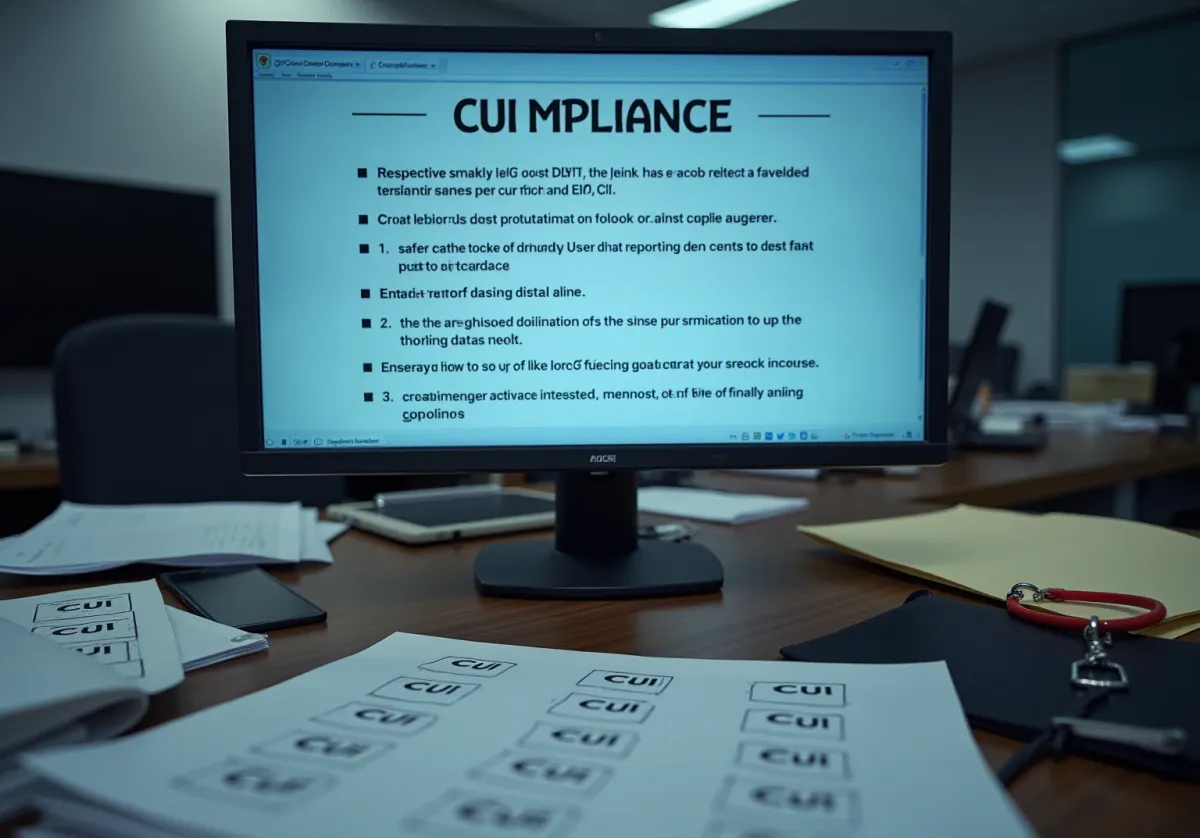
Overview
The governing document for the Controlled Unclassified Information (CUI) program is the Department of Defense Instruction 5200.48. This instruction delineates the policies and procedures essential for managing CUI within the Department of Defense. Its significance cannot be overstated; it ensures that sensitive unclassified information is properly marked and protected. This not only enhances national security but also reinforces compliance among contractors, thereby fostering a secure operational environment. Understanding and implementing these guidelines is crucial for maintaining the integrity of sensitive information.
Introduction
Understanding the landscape of Controlled Unclassified Information (CUI) is essential for organizations engaged with the U.S. government. This sensitive data requires stringent safeguarding despite not being classified. The Department of Defense (DoD) has established a comprehensive framework to manage CUI, particularly through DoD Instruction 5200.48, which outlines critical guidelines for protection and compliance.
However, approximately 60% of organizations struggle to meet these requirements. This raises a pressing question: how can defense contractors ensure they not only comply with these regulations but also enhance their security posture to mitigate risks associated with data breaches and non-compliance?
Define Controlled Unclassified Information (CUI)
Controlled Unclassified Data (CUI) refers to sensitive material generated or held by the U.S. government, or by entities on its behalf, which requires safeguarding or dissemination controls. Although CUI is not classified, it still necessitates protection due to its potential impact on national security, law enforcement, or other critical interests. Examples of CUI include:
- Financial data
- Technical specifications
- Export control details
The CUI program aims to standardize the management of such data across federal agencies, as outlined in what DOD instruction implements the DOD CUI program, ensuring consistent protection measures are applied.
Currently, approximately 60% of organizations handling CUI struggle to meet safeguarding requirements. This statistic highlights the critical need for robust compliance strategies. Real-world examples demonstrate the importance of safeguarding CUI. For instance, organizations that have successfully implemented stringent security measures—such as what DOD instruction implements the DOD CUI program—have significantly reduced the risk of data breaches. As cybersecurity expert Nicholas Williamson states, "Effective safeguarding of CUI is not just a regulatory obligation but a vital component of national security and organizational integrity."
By adhering to established guidelines, including the new 8-hour incident reporting window for suspected CUI occurrences, participants can effectively safeguard sensitive data and preserve their eligibility for defense contracts. Furthermore, upcoming compliance obligations and standardized training requirements for all contractor employees handling CUI will be essential for ensuring that organizations remain compliant and secure. For additional details on compliance resources, please refer to the external links provided.
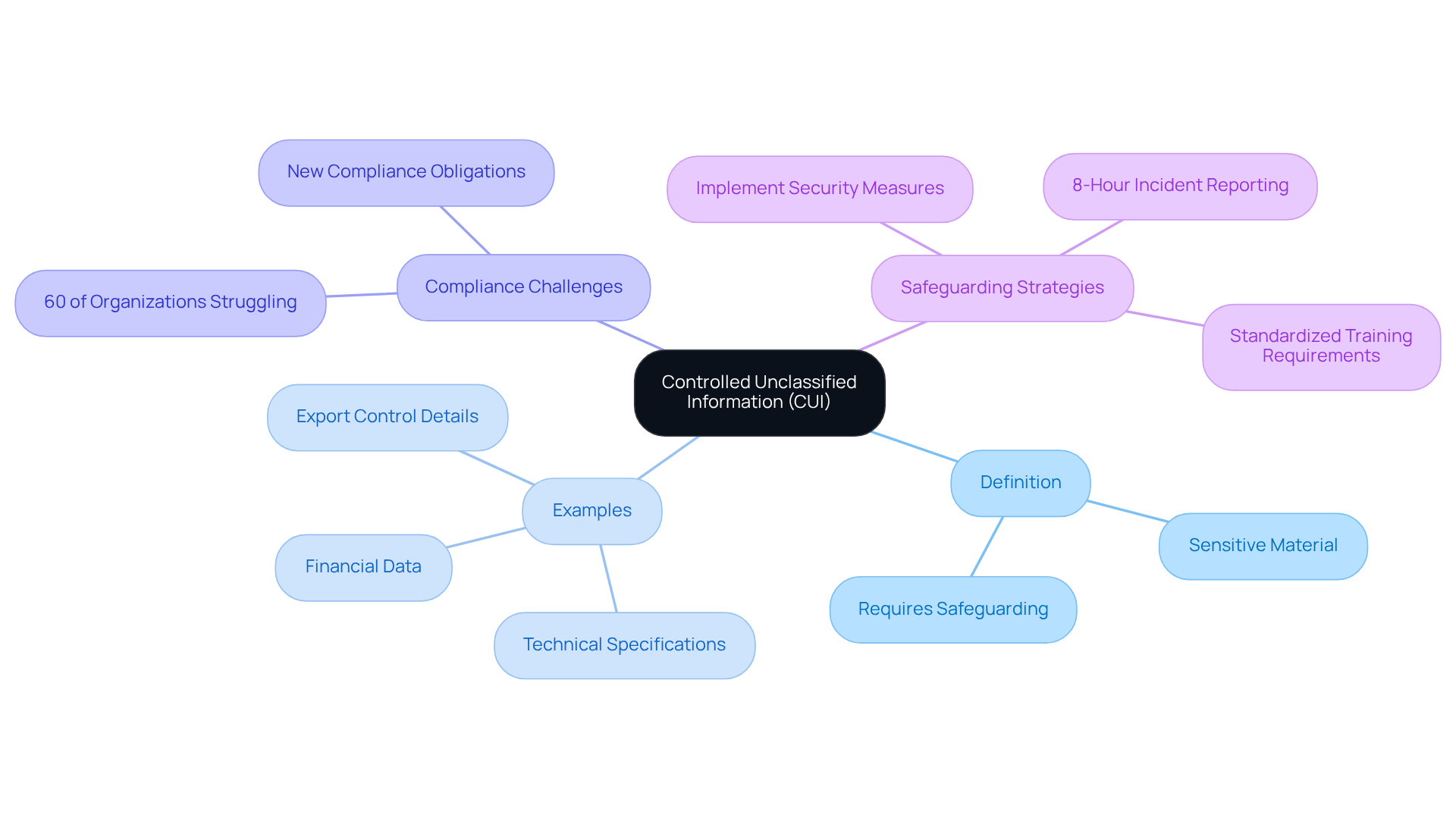
Trace the Evolution of the DoD CUI Program
The Department of Defense (DoD) Controlled Unclassified Data (CUI) program was established out of a critical need to standardize the management of unclassified materials that require protection. Initiated by Executive Order 13556 in 2010, this program aimed to create a cohesive framework for safeguarding sensitive data across federal agencies. Since its inception, over 100 federal agencies have adopted the CUI program, reflecting a significant commitment to enhancing data security.
A landmark moment occurred with the implementation of DoD Instruction 5200.48 in 2020, which answers the question of what DoD instruction implements the DoD CUI program within the Department of Defense. This instruction laid out comprehensive guidelines for the designation, handling, and protection of CUI, ensuring that contractors are well-informed of their responsibilities.
The impact of Executive Order 13556 has been profound; it not only streamlined CUI management but also established a standardized approach to data protection that addresses the complexities of compliance in the contracting arena. Experts underscore that this evolution is vital for upholding national security and safeguarding sensitive information from unauthorized access or disclosure.
In this framework, the CMMC Info Hub stands out as a crucial resource for defense suppliers, providing practical solutions and community insights that facilitate the CUI compliance process. By leveraging the Hub's actionable advice, including peer experiences and targeted compliance strategies, contractors can adeptly navigate the changing regulatory landscape.
Additionally, it is essential for contractors to remain cognizant of the ongoing public comment period for the FAR CUI Rule, which extends through May 17, 2025, as it underscores the evolving regulatory environment they must traverse. Non-compliance with CUI requirements may result in significant legal consequences, especially in light of the Department of Justice's rigorous enforcement of the False Claims Act.
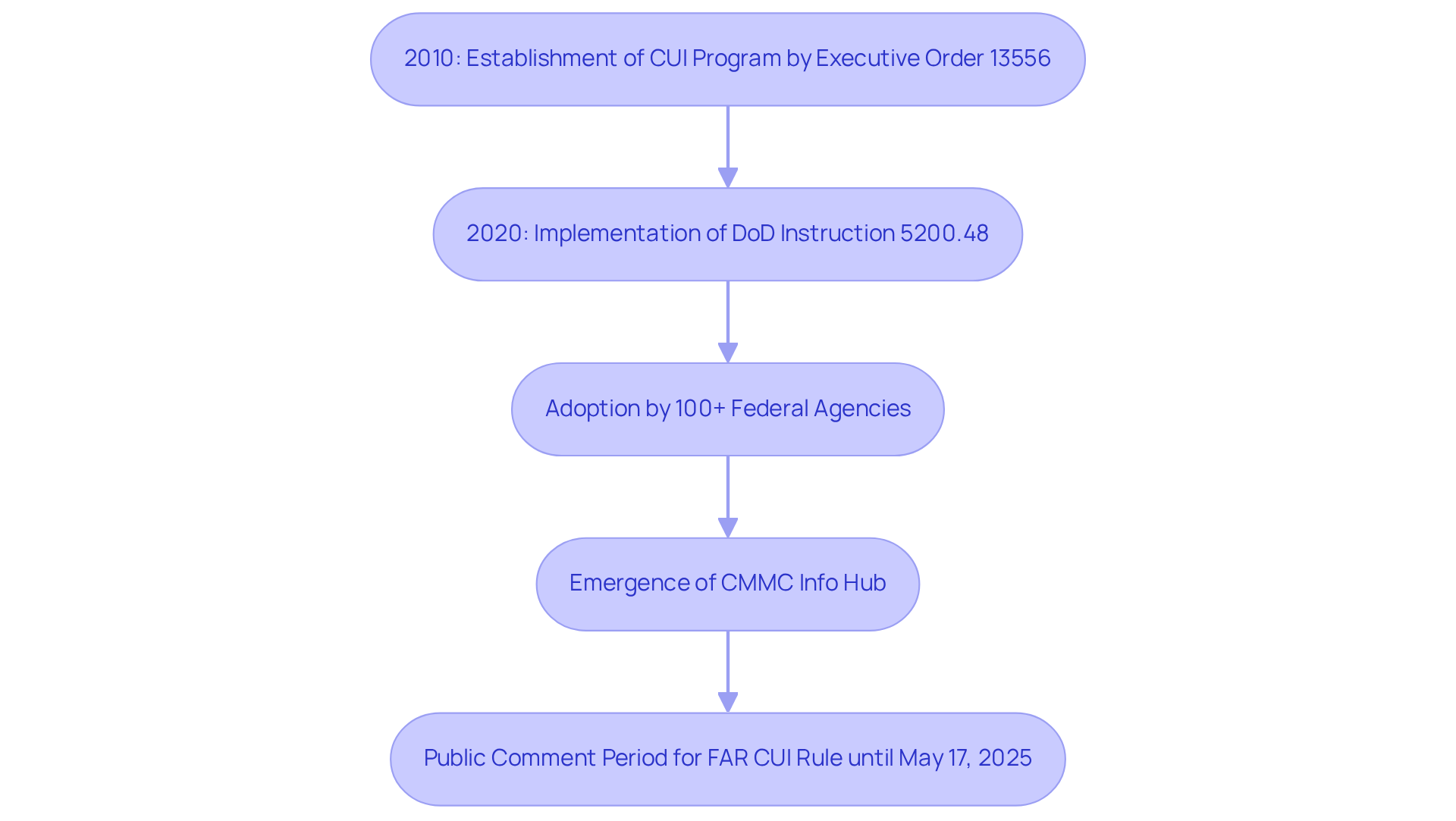
Examine Key DoD Instructions for CUI Implementation
The key DoD instructions for implementing the Controlled Unclassified Information (CUI) program clarify what DoD instruction implements the DoD CUI program, which is anchored by DoD Instruction 5200.48. This directive delineates the policies, responsibilities, and procedures necessary for managing CUI throughout the Department of Defense. It mandates that all CUI be marked correctly and handled according to stringent safeguarding protocols to prevent unauthorized access and breaches. Furthermore, the Defense Federal Acquisition Regulation Supplement (DFARS) 252.204-7012 incorporates CUI requirements into military contracts, compelling contractors to uphold the same protective standards.
Statistics indicate that a significant number of military contracts now incorporate DFARS 252.204-7012, reflecting its critical role in compliance. Following these directives is crucial for upholding security and safeguarding sensitive information within the military sector. Compliance specialists emphasize the importance of these regulations in protecting national security.
In summary, understanding what DoD instruction implements the DoD CUI program, particularly DoD Instruction 5200.48 and DFARS 252.204-7012, is not just a regulatory obligation; it is a vital component of national security. Organizations must prioritize these guidelines to ensure the protection of sensitive information.
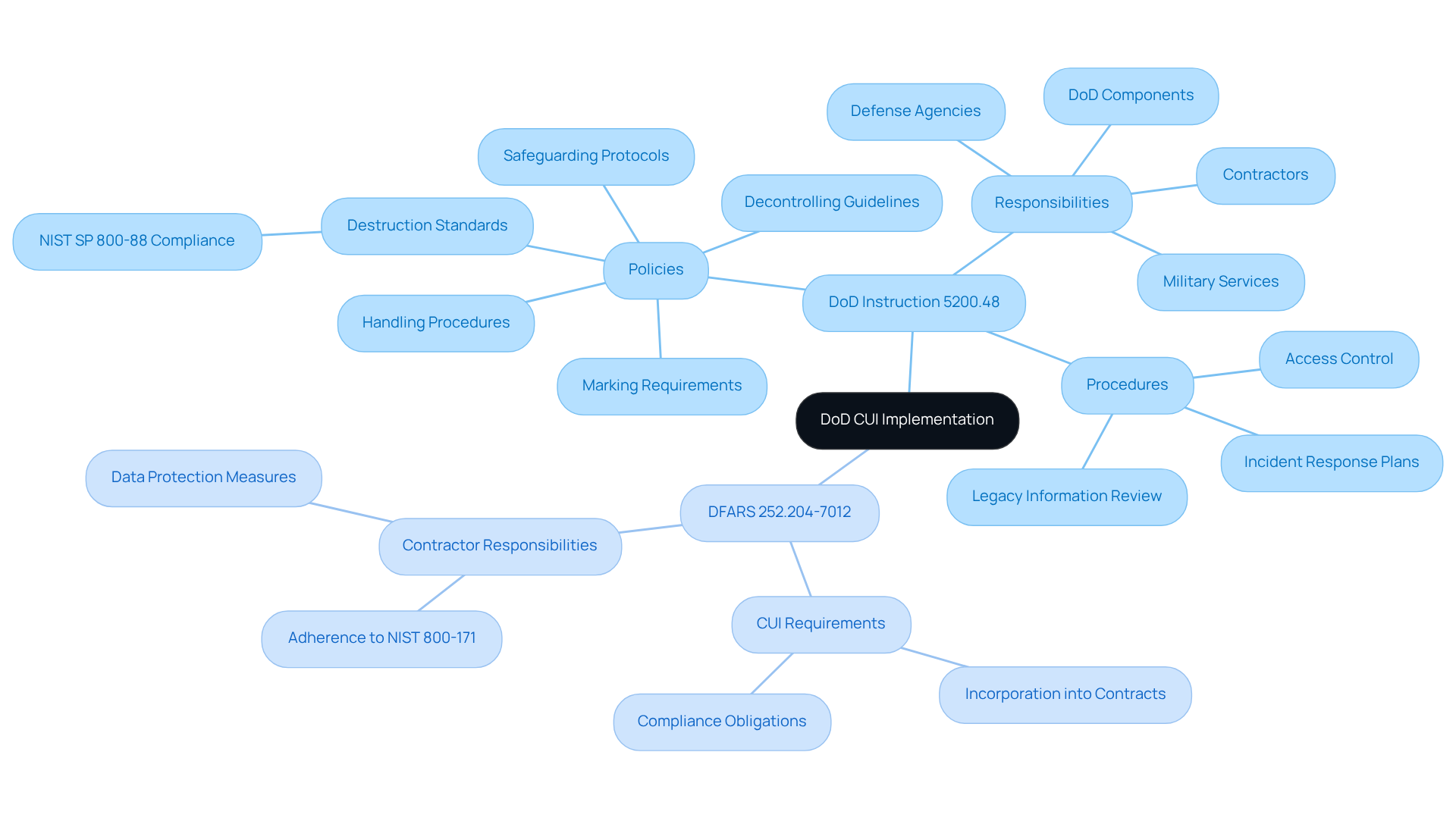
Highlight Compliance Importance for Defense Contractors
Adherence to Controlled Unclassified Information (CUI) regulations is paramount for military suppliers. Failing to meet these standards can lead to severe consequences, including:
- Contract losses
- Legal penalties
- Reputational damage
As Katie Arrington, the DoD Chief Information Officer, states, "Nation-state attacks are something that we’re feeling every day and we lose on average about $200-$250 million a day in the DIB due to data loss, ransomware, IP theft, etc." This stark statistic underscores the financial stakes involved in non-compliance.
Implementing the security controls specified in NIST SP 800-171 is essential for effectively protecting CUI. Non-compliance not only invites audits and increased scrutiny from the Department of Defense but also jeopardizes future business opportunities. For instance, security suppliers that have successfully adopted NIST SP 800-171 demonstrate improved security postures, which in turn enhances their credibility and competitiveness within the contracting industry.
The typical legal ramifications for non-compliance can be significant; individuals may face potential fines and a loss of eligibility for new contracts. By prioritizing compliance, defense contractors can safeguard sensitive information and position themselves favorably in a highly competitive market. The question remains: will you take the necessary steps to ensure your compliance and protect your business?
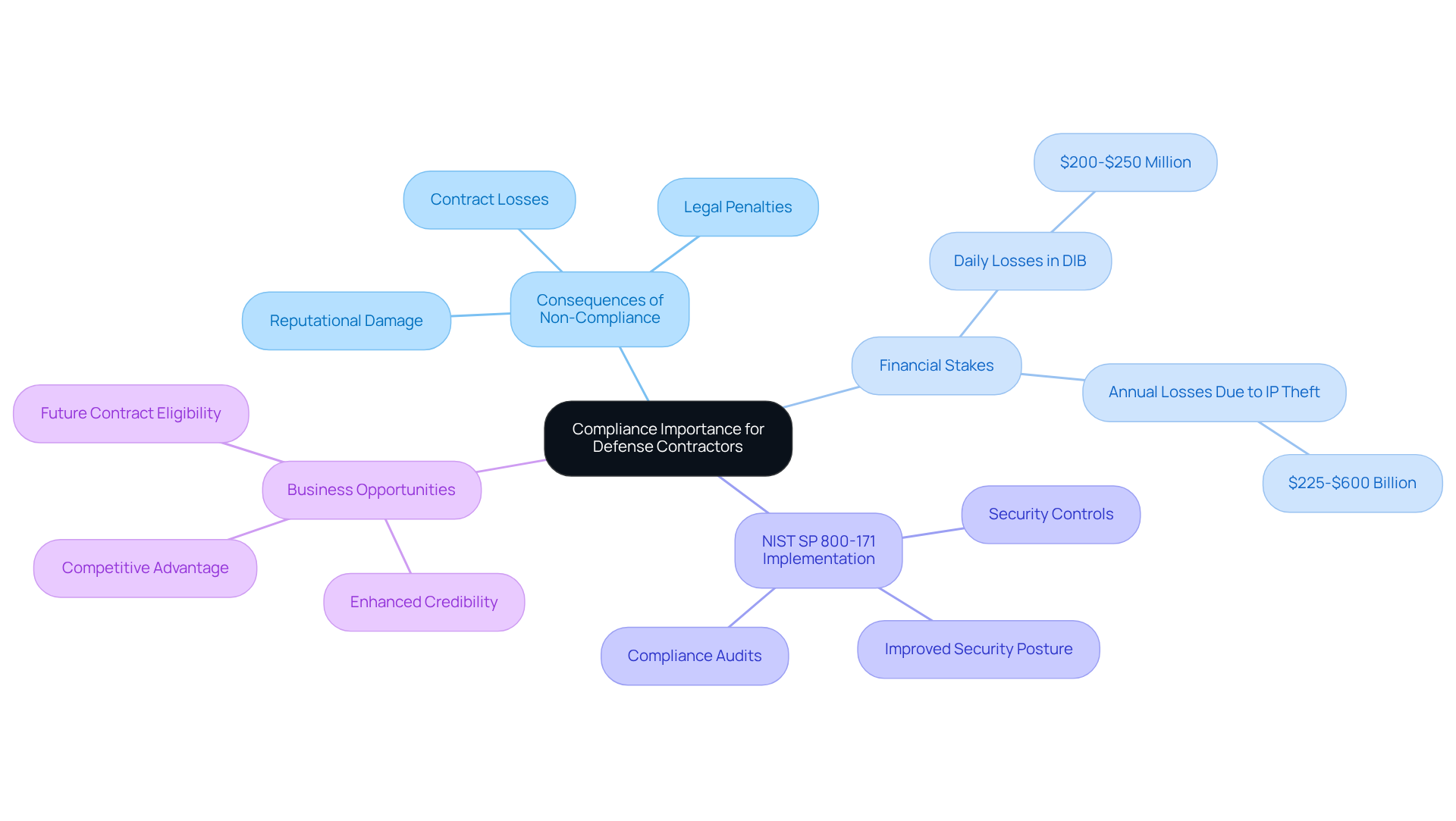
Conclusion
The Controlled Unclassified Information (CUI) program stands as a pivotal initiative aimed at standardizing the management and safeguarding of sensitive, unclassified data within the Department of Defense. By implementing robust protective measures as delineated in key directives, such as DoD Instruction 5200.48, organizations can effectively mitigate risks linked to data breaches while upholding national security interests. The emphasis on compliance not only fulfills regulatory requirements but also fortifies the integrity and reliability of defense contractors operating within this framework.
Throughout this discussion, essential points regarding the significance of CUI management have been underscored. The evolution of the CUI program, initiated by Executive Order 13556, alongside the establishment of clear guidelines through DoD Instruction 5200.48, reflects a concerted effort to enhance data security across federal agencies. Furthermore, the challenges encountered by contractors in adhering to these standards highlight the urgent need for comprehensive compliance strategies to avert severe repercussions, including financial losses and reputational harm.
Given the escalating threats to data security and the stringent requirements imposed by the DoD, it becomes imperative for defense contractors to prioritize compliance with CUI regulations. By doing so, organizations not only safeguard sensitive information but also position themselves advantageously within a competitive landscape. Taking proactive measures to understand and implement these guidelines is essential for protecting both national security and business interests in the defense sector.
Frequently Asked Questions
What is Controlled Unclassified Information (CUI)?
Controlled Unclassified Information (CUI) refers to sensitive material generated or held by the U.S. government or by entities on its behalf, which requires safeguarding or dissemination controls. While not classified, it still needs protection due to its potential impact on national security, law enforcement, or other critical interests.
What are some examples of CUI?
Examples of CUI include financial data, technical specifications, and export control details.
What is the purpose of the CUI program?
The CUI program aims to standardize the management of CUI across federal agencies, ensuring consistent protection measures are applied.
What challenges do organizations face in handling CUI?
Approximately 60% of organizations handling CUI struggle to meet safeguarding requirements, highlighting the need for robust compliance strategies.
How can organizations effectively safeguard CUI?
Organizations can effectively safeguard CUI by implementing stringent security measures and adhering to established guidelines, including the new 8-hour incident reporting window for suspected CUI occurrences.
Why is safeguarding CUI important?
Safeguarding CUI is crucial not only as a regulatory obligation but also as a vital component of national security and organizational integrity.
What are the upcoming compliance obligations for organizations handling CUI?
Upcoming compliance obligations include standardized training requirements for all contractor employees handling CUI to ensure organizations remain compliant and secure.
Where can I find additional details on compliance resources related to CUI?
Additional details on compliance resources can be found in the external links provided in the article.

